Roomba i3 vs i8: A Detailed Comparison Guide
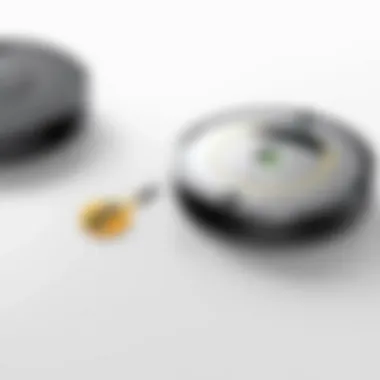
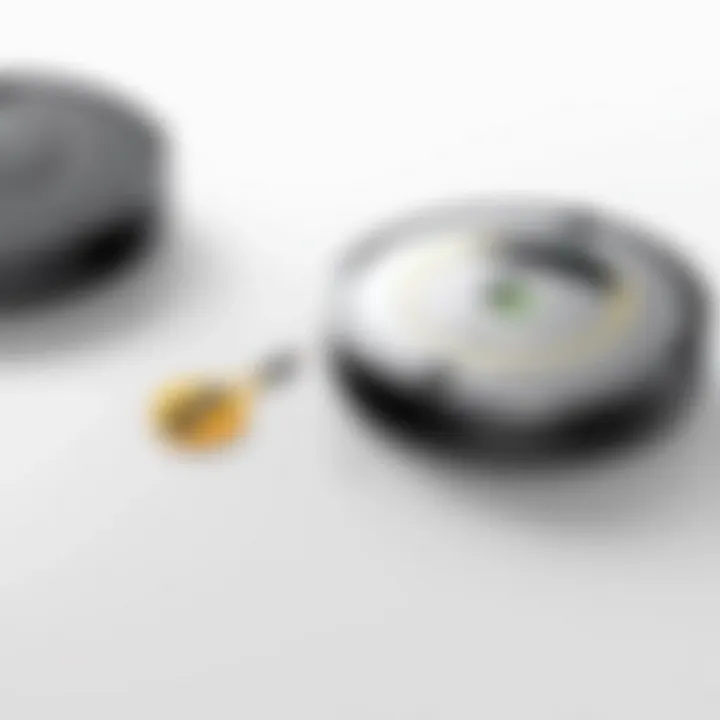
Overview of the Product
Robotic vacuum cleaners have significantly transformed how we approach home cleaning, making this once tedious chore a lot more manageable. In this instance, we delve into the Roomba i3 and Roomba i8, both popular models developed by iRobot. While they share a common lineage, their functionality, features, and price points cater to different consumer needs. Let's break it down to grasp how these two models compare and what advantages each holds.
Purpose and Benefits
Both the Roomba i3 and i8 were designed to simplify cleaning. They autonomously navigate rooms, free-wheeling around obstacles and can even return to their charging docks when low on battery. The fundamental benefit remains: one can enjoy clean floors without lifting a finger, except for the occasional emptying of the dustbin. When considering their purposes, the i3 serves as an entry-level option, while the i8 presents enhancements for more demanding users.
Target Audience
The Roomba i3 appeals primarily to those new to robotic vacuums or small households with minimal cleaning demands. People who prioritize function over advanced features will find the i3 sufficient. On the other hand, the i8 targets tech-savvy users and larger households, or those where pets are a common fixture, thanks to its advanced mapping and suction capabilities.
Key Features
When evaluating the i3 and i8, multiple features come into play:
- Smart Navigation: Both utilize iRobot's intelligent navigation system that maps your space, though the i8 offers more advanced mapping and room recognition.
- Suction Power: The i8 promises stronger suction capabilities, especially for pet hair and larger debris.
- Battery Life: The i3 typically offers around 75 minutes of cleaning time, while the i8 extends this up to 90 minutes, achieving a more comprehensive cleaning of larger areas.
- Smart Home Integration: Each model is compatible with various smart home ecosystems, but the i8 boasts improved voice command responsiveness.
"Understanding your home cleaning needs can help make a big difference in your robotic vacuum selection."
Technical Specifications
An essential aspect of comparing these two options is their technical specifications.
Detailed Product Specs
- Roomba i3:
- Roomba i8:
- Weight: 7.44 lbs
- Dimensions: 13.34 x 13.26 x 3.63 inches
- Dust Bin Capacity: 0.5 liters
- Cleaning Modes: 3
- Weight: 7.43 lbs
- Dimensions: 13.34 x 13.26 x 3.63 inches
- Dust Bin Capacity: 0.6 liters
- Cleaning Modes: 4
CPU Characteristics
Both units are equipped with an onboard processor that allows for real-time processing of sensor data with advanced algorithms. However, the i8’s chip is slightly more powerful, enabling faster navigation and more detailed mapping.
GPU Features
In terms of graphical processing, it's a classic case where the i8 again takes the lead with optimized graphical rendering of spatial awareness, allowing it to detect and map rooms more effectively than its counterpart.
Memory Details
While exact memory specifications aren't usually disclosed, it's clear the i8 comes fitted with a greater capacity to store maps for more intricate cleaning routes, meaning it can remember multiple floor plans effectively.
Performance Benchmarks
User feedback emphasizes a noticeable difference in both models' performance:
- The i3 is efficient for its class, managing standard carpet and hard floors adequately.
- The i8, though, shows superior performance in picking up pet hair and handling varied surface types.
Comparison with Similar Products
When positioned in the market, it's essential to look at how these models stack up against some competitors.
Market Competitors
Both models face fierce competition from brands like Ecovacs and Shark. Both brands offer models that strive for similar functionality and promise similar benefits, which enhances consumer choice.
Comparative Analysis
- Roomba i3 vs. Ecovacs Deebot N79S:
- Roomba i8 vs. Shark IQ Robot:
- The i3 has slightly superior navigation capabilities, while the N79S offers an endless cleaning time with continuous docking.
- The i8 excels in suction power, while the IQ provides a unique self-emptying dock feature, targeting convenience.
Best Use Cases
- Roomba i3 is best suited for smaller homes or individuals looking to dip their toes into robotic cleaning.
- Roomba i8 appeals to larger households or pet owners due to its additional features and power.
Installation and Setup Guide
Setting up these devices is a breeze, but a quick guide can ease the process for first-timers.
Requirements for Installation
- A clean floor area for the robot to navigate freely;
- Access to a stable Wi-Fi connection for features and updates.
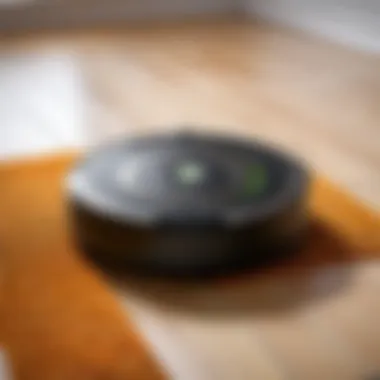
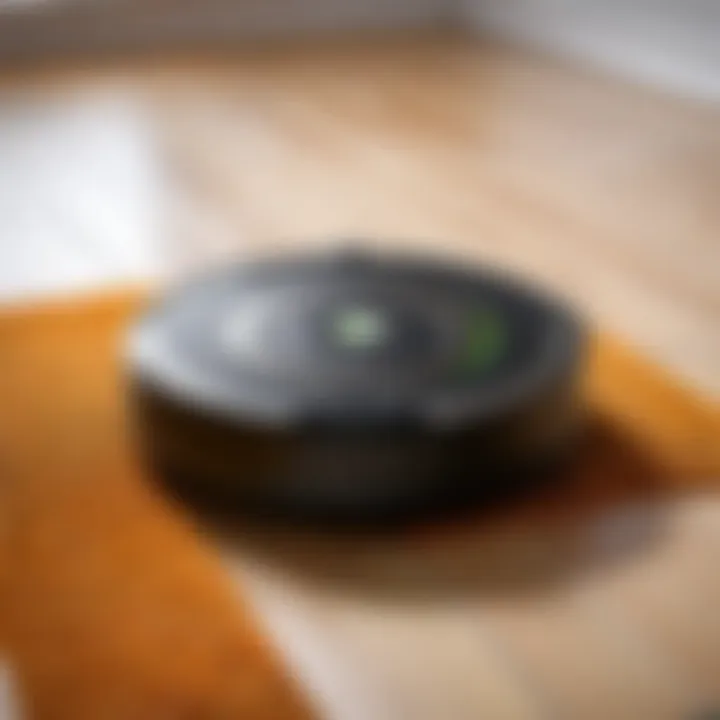
Step-by-Step Process
- Unbox your robotic vacuum and place the charging dock against a wall.
- Plug in the dock and ensure it's plugged into a power outlet.
- Download the iRobot app and follow the in-app instructions to connect the vacuum to Wi-Fi.
- Allow the vacuum to complete its initial charging (usually takes a couple of hours).
- Initiate your first cleaning cycle via the app or directly on the vacuum.
Tips for Optimizing Setup
- Keep furniture minimal to allow the robot to navigate easily, especially during its first run.
- Regularly clear the charging dock area to avoid interruptions.
Help Sections and Troubleshooting
Issues may arise, but troubleshooting isn’t typically a hurdle.
Common Issues and Solutions
- Robot not charging: Make sure the charging connections are clean and secure. If issues persist, resetting the unit may help.
- Navigation problems: Ensure the robot isn’t blocked by debris and that there's good lighting in the room.
Expert Tips
The more you familiarize yourself with the app and its features, the better the robots can perform.
Prelude to Roomba Robotic Vacuums
Robotic vacuums have made a significant mark in the realm of home cleaning. In an age where technology increasingly promisesto ease our lives, these autonomous cleaners stand at the forefront, transforming how households approach cleanliness. The Roomba line, launched by iRobot, showcases this evolution in a competitively packed market. These devices perform more than just sweeping up dirt; they offer customers an efficient and user-friendly way to maintain their living spaces, without the drudgery typically associated with vacuuming.
A pivotal element of this article is understanding the importance of Roomba vacuums within the modern household. As families grow busier, the need for time-saving solutions has prompted consumers to reconsider their cleaning routines. Roomba robotic vacuums promise to serve as the right hand in these efforts, allowing for a cleaner home without the added burden of manual labor. Moreover, the introduction and refinement of models like the i3 and i8 bring forth the question: how do they stack up against each other?
This narrative not only examines their unique features but also analyzes their performance, user experience, and overall value. With the right insights, consumers can discern which model may suit their specific needs and preferences better, be it for plush carpets or hard floors.
"A clean house is a sign of a wasted life. But with Roomba, you don’t have to waste yours vacuuming!"
Overview of Roomba i3
The Roomba i3 stands as a noteworthy player in the realm of robotic vacuums, offering impressive features while remaining accessible to a wider audience. Acknowledging its importance brings several benefits to light, not just for potential users but also within the broader context of smart home technology. Understanding what the i3 offers helps distinguish it from other models and sets the stage for a better-informed choice that caters to individual needs.
Design and Build Quality
Crafted with durability in mind, the Roomba i3 boasts a robust build that combines function with aesthetic appeal. Its low-profile design enables it to glide under most furniture without a hitch, ensuring maximum cleaning coverage. The materials used in construction are designed to endure the test of time, giving users confidence in their purchase. When you glance at the i3, the sleek exterior may draw you in; however, it’s the thoughtful engineering that ensures it can tackle various cleaning tasks effectively.
Cleaning Performance
Where the Roomba i3 truly shines is in its cleaning performance. Engineered for hard floors and carpets alike, it adeptly picks up debris ranging from pet hair to crumbs. Users have noted how the suction power feels adequate for everyday messes, although it may not compete with its more advanced counterparts in deep-cleaning scenarios. It’s the unit's navigational capabilities that make a significant difference here. The i3 employs a smart cleaning pattern rather than the random bumping found in lesser models—this translates to a methodical approach that maximizes efficiency.
Technological Features
Smart Mapping
Smart Mapping on the Roomba i3 marks a leap forward in robotic vacuums. This feature allows the vacuum to learn the layout of your home, creating an efficient cleaning path based on the room configurations. The key characteristic is its adaptability; the more the i3 cleans, the better it understands where to go. This unique attribute is beneficial for those with challenging room layouts, as it minimizes the odds of missing spots. One downside could be related to its limited mapping capabilities in comparison to higher-end models—while the i3 collects valuable data, it won't store as many unique maps, which may be a consideration for larger homes.
App Integration
With app integration, Roomba i3 enhances user control significantly. The iRobot Home app permits users to schedule cleanings remotely, adjust settings, and even view cleaning history. This aspect serves a practical purpose, marrying convenience with functionality. The main selling point is the simplicity of use; users can control their vacuum at their fingertips, even when they are miles away. However, some users have reported occasional connectivity issues, highlighting an area for potential improvement. Overall, it transforms the vacuum experience into a seamless part of daily life instead of a cumbersome chore.
Battery Life and Charging
Battery life for the Roomba i3 tends to commendably meet expectations, offering up to 90 minutes of uninterrupted cleaning on a single charge. It’s equipped with a self-recharging feature, ensuring it heads back to its dock when it’s time for a power-up. Although it’s generally efficient, heavy cleaning on carpets may lead to a slightly shorter run time. Keeping in mind that it returns to finish the job after charging, this self-sufficient aspect proves helpful for busy households.
Overview of Roomba i8
The Roomba i8 holds a significant place in the evolution of robotic vacuums. As manufacturers continue to refine their designs and technology, it becomes crucial for potential buyers to dissect what precisely sets apart the i8 from its predecessors, particularly the i3. The Roomba i8 promises a more robust cleaning experience and is tailored for households where efficient dust-busting is essential. A detailed examination showcases the design, performance, and tech-savvy features that could make it an appealing choice.
Design and Build Quality
When discussing the design of the Roomba i8, it’s evident that aesthetics and functionality walk hand in hand. A sleek, low profile allows the i8 to glide under most furniture effortlessly, an essential feature for any home with cluttered nooks. It sports a modern finish that might appeal to tech enthusiasts, showcasing a thoughtful combination of durability and elegance.
Quality-wise, the materials used feel sturdy, preventing the vacuum from succumbing easily to the bumps and jolts of everyday use. The thoughtful arrangement of the brushes and wheels ensures that it can navigate with relative ease around tight corners. Overall, the i8’s design isn’t just about looks; it’s crafted to work brilliantly in real-world conditions, which is a testament to its engineering.
Enhanced Cleaning Performance
The Roomba i8 is not just a pretty face; its cleaning capabilities are significantly upgraded compared to the i3. The motors are more powerful, enabling the i8 to pick up stubborn dirt and debris, whether it��’s nestled deep in carpet fibers or scattered on hard floors. Users have noted that the i8's suction system feels considerably more effective, making it ideal for households with pets where hair tends to accumulate.
Furthermore, the i8 excels in adapting to different surfaces. Whether transitioning from plush carpets to sleek tiles, it adjusts seamlessly without missing a beat. This enhanced performance is not just a nice-to-have; it’s a game changer for busy households that can’t afford to deal with residual messes between cleaning sessions.
Technological Advancements
Advanced Smart Mapping
One prominent feature of the Roomba i8 is its Advanced Smart Mapping technology. This smart tech can learn the layout of your home over time, creating a detailed map to optimize cleaning routes. What makes this particularly significant is its ability to remember your home’s unique features, allowing it to tailor its cleaning approach accordingly.
The key characteristic here is the i8's capacity to adapt. For users, this means less time waiting for a thorough clean, as the Roomba can swiftly buzz through previously mapped spaces. However, it’s worth noting that while this mapping feature is beneficial, it may take some time for the vacuum to pleasantly familiarize itself with larger or more complex homes.
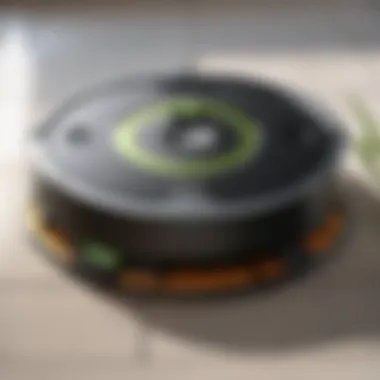
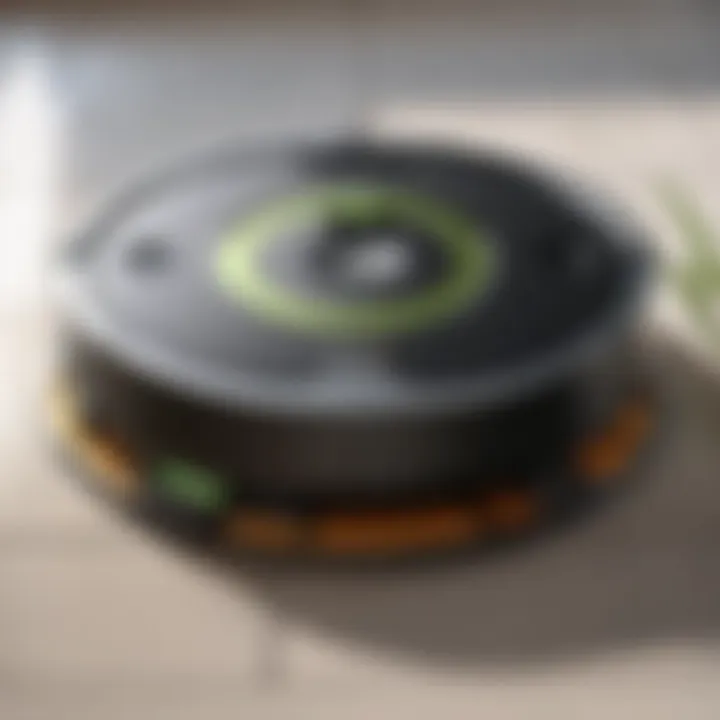
Improved App Features
The i8 also comes packed with improved app features that enhance user engagement and control. Through the corresponding smartphone application, users have an easy avenue to schedule cleanings, adjust settings, and even monitor the cleaning progress in real-time. A noteworthy aspect is the ability to control the vacuum via voice commands through smart home integrations, making it a convenient addition to a modern smart home ecosystem.
One unique feature includes scheduling cleaning based on the time of day and the room frequency. This can be particularly beneficial for households with rotating schedules, as the app allows the i8 to clean when it’s most convenient. However, it can take some getting used to, as users may need to familiarize themselves with all the functionalities available.
Battery Life and Charging Efficiency
Lastly, the battery life of the Roomba i8 is a significant talking point. It's engineered for prolonged cleaning sessions, a crucial element for larger homes. Users often report that the i8 gives them ample cleaning power without frequent battery interruptions. During cleaning, the i8 monitors its energy levels and intelligently decides whether to return to the dock or continue until the job is finished, which can be particularly helpful for larger areas where it often needs to recharge mid-cleaning.
Comparative Features of i3 and i8
When it comes to choosing between the Roomba i3 and the Roomba i8, the comparative features of these two models play a pivotal role. Understanding how each device performs across different environments, handles maintenance, and navigates spaces can significantly influence a buyer's decision. This section meticulously examines these features, helping potential purchasers grasp what sets these two robotic vacuums apart in a rapidly evolving cleaning tech landscape.
Performance in Various Environments
Carpets
Considering how each model performs on carpets is crucial for many home setups. Carpets often trap dust, pet hair, and allergens, making it vital for a vacuum to have robust suction capabilities. The Roomba i3 tends to handle carpets adequately, using its multisurface cleaning system to adjust suction power based on the carpet type. However, the i8 takes this a step further with more advanced brush technology that increases its effectiveness on thicker carpets.
A significant characteristic of the i8 is its ability to detect carpeted areas more efficiently, adjusting to different heights. This feature is particularly beneficial for homes with various carpet styles, as it optimizes the cleaning process. In contrast, while the i3 performs decently, it may leave behind stray debris in deeper fibers, reflecting its slightly less advanced carpet handling.
HARD Floors
HARD floors, like hardwood and tile, require different considerations. Here, both vacuums shine. The Roomba i3 provides solid performance, ensuring a clean floor with its sweeping brushes that gather dust and crumbs effectively. Users often appreciate its simplicity and consistency on such surfaces.
The i8, however, exhibits a slight edge with its enhanced dirt detection system. This means it can identify areas with more dirt and increase its cleaning intensity when needed. Furthermore, the i8's capability to seamlessly transition between different floor types adds even more value for those with an open floor plan. Therefore, while both units do the job well, the nuances in dirt detection and adaptability may sway a choice toward the i8 for those maintaining diverse floor materials.
Multiple Room Navigation
The ability to navigate multiple rooms efficiently is another comparison point that may tip the scales. The Roomba i3 offers decent maneuverability, but it can sometimes struggle with remembering where it's already cleaned, especially if faced with a labyrinth of furniture. This can lead to repeated passes over the same area, which is frustrating for users.
On the contrary, the Roomba i8 boasts improved memory and navigation technologies. It utilizes advanced mapping algorithms that allow it to create a more efficient cleaning path, ensuring that it completes a job quicker. Furthermore, the app integration features of the i8 enhance user experience by allowing customization of cleaning maps. Users can select specific rooms or areas, essentially commanding the device to focus on the messiest spots first, showcasing a more intuitive design in managing multiple areas.
Maintenance and Usability
Filter Replacement
In terms of maintenance, simplicity can’t be overlooked. The Roomba i3 has a filter that is fairly easy to access and swap out when needed. This straightforward filter replacement is advantageous for those who may not want to deal with overly complicated maintenance routines.
The i8's filter replacement process is similarly user-friendly, but it stands out by incorporating a more advanced filtration system. This system is designed to trap more allergens and fine dust particles, catering to users with allergies or respiratory concerns. The enhanced filtration contributes to improved air quality, making this characteristic a real seller for certain demographics.
Bin Capacity
Another factor tied to overall usability is bin capacity. The Roomba i3 has a reasonable bin size that balances between being compact and capable of holding enough dirt before needing to be emptied. For smaller homes, this capacity works fine, but larger spaces may require more frequent emptying, which can be tedious.
In contrast, the i8 sports a larger bin, allowing for extended cleaning sessions without interruption. This feature is beneficial for bigger homes or for those who prefer to run their vacuums less frequently. It also enhances the efficiency of the cleaning process: fewer interruptions mean more thorough cleaning when the vacuum is in operation.
Mapping and Navigation
The comparisons of mapping and navigation technology highlight a significant leap from the i3 to the i8.
Roomba i3 deploys basic navigation systems, which sometimes require the user to guide it when it encounters obstacles or complex layouts. In contrast, the i8 features more sophisticated sensors and mapping capabilities.
With improved navigation, the i8 can better understand and adapt to its environment. This means not just evading obstacles, but learning to clean spaces systematically over time. The app integration further impacts usability by allowing users to track cleaning progress, ensuring nothing gets missed.
User Experience and Feedback
User experience plays a pivotal role in determining the overall effectiveness of a device like the Robotic Vacuums. In the realm of smart home technology, user feedback directly influences purchasing decisions and future product developments. When it comes to assessing the Roomba i3 and i8, understanding customer experiences can highlight strengths and weaknesses that may not be immediately apparent through specifications alone.
Feedback often sheds light on day-to-day usability, maintenance requirements, and overall satisfaction—all crucial factors for potential buyers. It’s a window into how these vacuums interact with their environments and the expectations they meet or surpass. Additionally, positive and negative reviews can reveal trends, such as user preferences regarding cleaning modes, ease of use, and even noise levels during operation. Furthermore, customers might express concerns about technical issues, battery life, and app functionality.
Customer Reviews for i3
Customer reviews for the Roomba i3 reflect a largely favorable reception. Many users praise its user-friendly design and effective cleaning capabilities. A lot of reviews highlight the i3's ability to adapt to various floor types, particularly its functionality on hard surfaces.
"I've got hardwood floors and my i3 does a bang-up job, picking up all the dust and pet hair without a hitch. Just set it and forget it."
This ease of use resonates well with folks looking for a no-fuss cleaning solution. Many reviewers also appreciate the value for money with this model, considering its compact design and efficiency. Numerous users have expressed satisfaction with the i3’s smart mapping feature, which helps the vacuum learn the layout of their homes, making it more effective over time.
However, some concerns have been raised about the battery life, especially for larger homes. Though adequate for smaller areas, users with extensive floor layouts find themselves needing to recharge the device more frequently. Additionally, a few reviews point out that the i3 may struggle with thick carpets compared to other models.
Customer Reviews for i8
The Roomba i8 garners attention for its enhanced features and performance. Users often commend the i8 for its powerful suction and superior cleaning ability on carpets. Many have articulated their surprise at how effectively it tackles pet hair.
"I have two cats and the hair is everywhere, but my i8 chases it down like a champ. It feels like a little army of cleanliness in my home!"
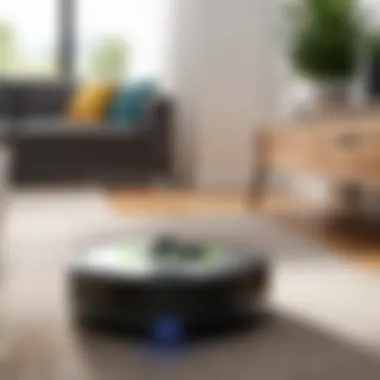
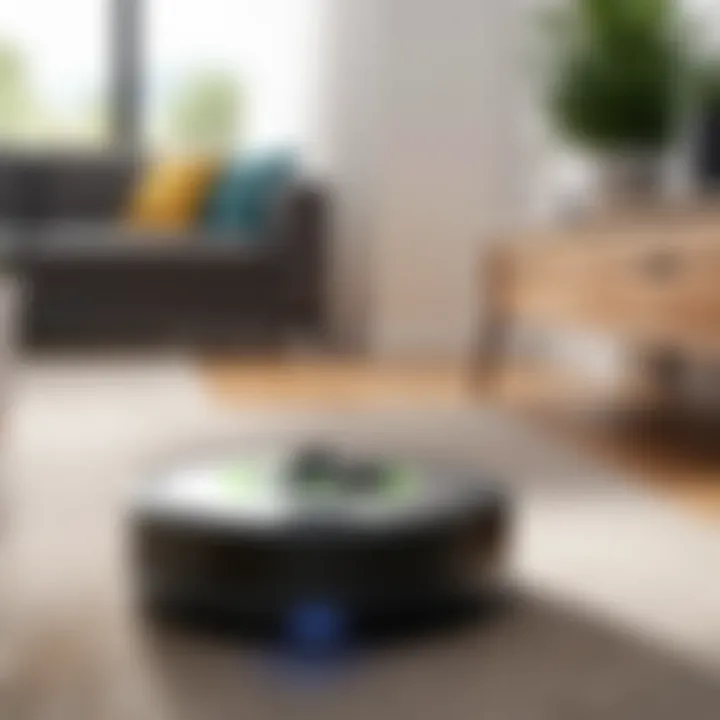
Beyond cleaning power, the reviews frequently highlight its advanced smart mapping technology. Customers appreciate the i8’s ability to remember multiple rooms, allowing users to designate specific areas for cleaning. This is particularly beneficial for those with intricate home layouts. User feedback often notes the seamless integration with app features that allow for customized cleaning schedules while incorporating remote start functionality.
On the flip side, some critiques focus on its price point, suggesting that while it offers excellent features, it may not fit every budget. A few customers also mention the learning curve associated with its more advanced settings.
In summary, user experience and feedback provide a telling perspective on the Roomba i3 and i8. These insights underline their respective strengths, such as ease of use and advanced technologies, while also pointing out areas for potential improvement. Understanding customer opinions helps tech enthusiasts, gamers, and computer builders make informed choices when selecting the right robotic vacuum to meet their cleaning needs.
Price Analysis
Price analysis is a crucial aspect of this article, as it sheds light on the financial implication of choosing between the Roomba i3 and Roomba i8. When investing in a robotic vacuum, understanding the costs associated with each model goes beyond just the ticket price. An informed approach to price analysis allows consumers to gauge the long-term value provided by each machine.
The evaluation of pricing is not merely a look at what one pays upfront; it also involves a consideration of features, durability, and ongoing maintenance costs. Many consumers may fall into the trap of solely selecting based on a lower price point, without contemplating how that choice will impact their cleaning routine and wallet over time.
Additionally, observing market trends and seasonal sales can yield significant savings. For instance, certain shopping periods, like Black Friday or after holiday sales, usually offer deep discounts. Keeping an eye out for those moments can translate into a better financial decision.
Price Point Comparison
When comparing the Roomba i3 and the Roomba i8, their price tags sit at contrasting ends of the spectrum. Typically, the i3 tends to carry a lower price, making it more accessible for those who want reliable cleaning without breaking the bank. However, with its lesser price, some features and technological enhancements available on the i8 might be absent or less efficient in the i3.
On the other hand, the Roomba i8, while toying with a heftier price tag, offers additional capabilities that could justify the higher cost. To put into perspective, here’s how they stack up:
- Roomba i3: Often ranging between $299 and $349.
- Roomba i8: Typically falls in the range of $499 to $549.
Choosing which to spend on may depend on how much one values advanced features such as app integration, enhanced mapping, or overall performance on various surfaces. A look at consumer feedback often reveals that while some users find the i3 perfectly capable, others may find the benefits offered by the i8 well worth the extra investment.
Value for Money Analysis
When discussing value for money, the term encapsulates whether a product delivers adequate performance and features relative to its price. The Roomba i3 certainly provides a solid cleaning solution, especially for users with modest needs. If cleanliness is your goal without too many bells and whistles, then the choice of the i3 might be both budget-friendly and clever.
Conversely, the Roomba i8 offers a more robust set of features. Those who appreciate technology and want sophisticated cleaning mechanisms will likely find that paying a premium for the i8 could enhance their experience significantly. Consider these points when judging value for money:
- Efficiency: The i8 boasts better algorithms for performance, particularly on carpets versus hard floors.
- Durability: At face value, while the i3 might fit the budget, the warranty and durability of the i8 could save trouble in the long run.
- Feature Set: Smart mapping can streamline cleaning routines, allowing users to customize paths, which may justify the higher price.
In essence, the decision on which Roomba to choose comes down to individual needs and preferences, along with a keen assessment of what features contribute to a meaningful cleaning experience. Ultimately, understanding the landscape of pricing and value can significantly influence your satisfaction with your choice.
Final Recommendations
When it comes to choosing between the i3 and i8 models, it’s important to think carefully about how you plan to use your robotic vacuum. Each model has its strengths and is tailored for specific needs and preferences, making this section vital in guiding your decision.
First off, consider the general layout of your home. If your space includes lots of carpet or if you have pets, the Roomba i8 shines with its superior suction and advanced features designed to tackle stubborn hair and dirt. The cleaning performance is a notch above, which is a crucial consideration if you want to maintain a pristine look and feel in your living areas. In this context, the i8 might just be your best bet.
On the flip side, if your home mostly features hard floors and you prioritize budget, the Roomba i3 offers a solid performance that covers the essentials effectively. It’s straightforward while still being smart enough to do the job without breaking the bank. If you’re looking for a cost-effective option and your cleaning needs aren’t overly complicated, you might find the i3 to be quite suitable.
But beyond just floors, think about the helping hand you want. The i8’s added features like smarter app integration and enhanced mapping capabilities provide flexibility that’s great for tech enthusiasts who love to have control at their fingertips. This makes scheduling cleanings and managing maintenance a much more intuitive experience. In comparison, the i3, while lacking some of the bells and whistles, still offers fundamental functionalities that can cater well to simplicity-seekers.
Lastly, consider ongoing costs like filter replacements and maintenance. Both vacuums present lightweight designs that ease upkeep, but their differences in bin capacity might affect the frequency of emptying, especially for larger households.
Ultimately, it really boils down to personal preferences and use cases. You need to weigh what’s going to matter most to you when it comes down to cleaning your space effectively and conserving your resources.
Key Takeaway: Assess your specific cleaning environment and personal preferences before making a decision, as both models cater to distinct user needs.
Best Use Cases for i3
The Roomba i3 is a fantastic choice for various scenarios. Here are some specific use cases:
- Apartment Living: If you live in a smaller space, the i3 can work like a charm, easily navigating rooms and maintaining cleanliness without overwhelming you with features you may not need.
- Basic Cleaning Needs: Ideal for those who want a vacuum that handles day-to-day messes on hard floors without fussing over complex configurations.
- Light Budget: The i3’s more approachable price point makes it a solid option for students or budget-conscious households looking for reliable cleaning without heavy investment.
- Occasional Pet Owners: While it may not specialize in deep hair extraction, the i3 does an adequate job if pet hair is an infrequent concern.
Best Use Cases for i8
On the other hand, the Roomba i8 boasts features tailored for a more demanding environment. Its ideal uses include:
- Large Homes: If your home spans a spacious area, the i8 can manage multiple rooms effectively, cleaning large patches of carpeted and hard surfaces without interruptions.
- Pet Owners: Those with furry friends will appreciate the enhanced suction power that tackles stubborn pet hair and dander without missing a beat.
- Tech Enthusiasts: If you're someone who loves smart home gadgets, the i8 integrates neatly with app functionalities, providing a modern, high-tech cleaning experience.
- Busy Households: If you have a hectic schedule, the i8’s advanced mapping and scheduling allow it to clean efficiently while you’re out, making it a practical solution for continuous cleanup.
In summary, the final recommendations provided here illuminate the paths you might take with either model. Consider your unique situation carefully, and you will find the most appropriate vacuum that fits your lifestyle and home perfectly.
Ending
In drawing the curtains on the comparative analysis of Roomba i3 and Roomba i8, it's vital to highlight how both robotic vacuums cater to different segments of the cleaning market. Each unit boasts unique characteristics and functionalities that appeal to distinct user preferences and household needs.
Summary of Key Differences
Both models present a unique set of features and capabilities. Here are the notable differences:
- Cleaning Performance: The i8 outshines the i3 with its enhanced suction power and advanced dirt detection features, making it more adept for homes with pets or heavier debris.
- Technological Features: The i8 incorporates advanced smart mapping technology and improved app features which allow for more refined control and scheduling. In contrast, the i3 offers competent but somewhat less sophisticated tech.
- Design and Build: While both share a sleek design, the i8's construction is generally perceived as sturdier, which may yield a longer lifespan.
- Battery Life: The i8 offers marginally better battery efficiency, resulting in longer cleaning sessions and quicker recharging times.
These differences should play a significant role in influencing the decision-making process for potential buyers.
Final Thoughts on i3 vs i8
Ultimately, the choice between i3 and i8 boils down to individual needs and priorities. If you're seeking a reliable, cost-effective solution that meets basic cleaning requirements, the i3 is a liable contender. However, for those who prioritize cutting-edge technology and superior cleaning performance, the i8 might just be worth the splurge.
It's also essential to consider future needs. As lifestyles evolve, so too will your cleaning demands. Investing in the right robotic vacuum does not merely fulfill present cleaning tasks but can significantly streamline home maintenance over the long haul.
As you weigh your options, keep in mind how each device aligns with your lifestyle and home environment. You want a tool that blends seamlessly into your routine, working diligently while you focus on other matters of daily life.
In the end, whether it’s the solid dependable i3 or the glamorous tech-savvy i8, both Roombas represent concrete steps forward in the realm of home cleaning solutions.



